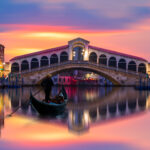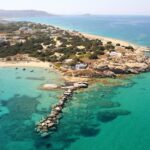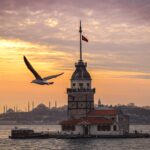Casablanca Less Than 48 Hours Challenge
Introduction
For many visitors, Casablanca is simply the international gateway into Morocco. Although it can’t offer the atmosphere and medieval history of more famous tourist destinations like Marrakesh and Fez, the country’s largest city is worth more than a layover. Here’s how we recommend spending 48 hours in the White City, with Relais & Châteaux’s Hôtel Le Doge as your base. This 1930s property represents the best Art Deco architecture that Casablanca is famous for, with a pristine white façade and interiors defined by plenty of red velvet and gilded accents.
Day 1
On your first morning in Casablanca, wake up in a grand suite with a four-poster bed, beautiful molded ceilings, and Art Deco drawings on the walls. Take your time dressing before going upstairs to the rooftop restaurant. Here, the city lies beneath you, a gorgeous backdrop for your breakfast of freshly baked bread, exotic fruits, and eggs cooked to order. After breakfast, prepare to get acquainted with the city by wandering around your local neighborhood. This area of Casablanca is filled with architectural landmarks, and your first stop should be near Mohammed V Square. Serving as the city’s unofficial meeting place, it’s a bustling panorama of modern Moroccan life, with flocks of strutting pigeons and an impressive fountain.
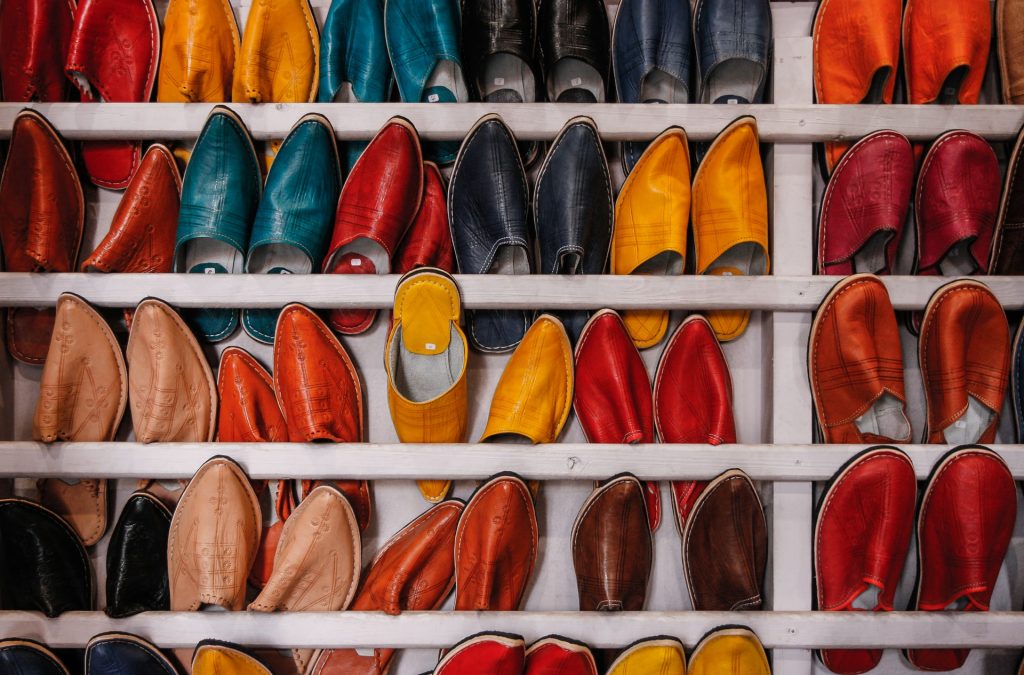
The main attraction is the surrounding architecture. Many buildings, including the courthouse, the police headquarters, and the post office, are fine examples of the Mauresque style, which marries traditional Moorish influences with hallmarks of Parisian Art Deco. Look out for the Wilaya with its imposing clock tower and the ultra-modern Grand Théâtre de Casablanca. From the square, wander a few blocks west to Sacré-Coeur Cathedral, a former Roman Catholic church and exhibition space that epitomizes Art Deco style with its clean, white lines and romantic stained-glass windows.

Your cultural education continues with a visit to Musée Abderrahman Slaoui, located just across the street from the cathedral and almost next door to your hotel. The museum hosts the private collection of the late Moroccan businessman and humanist Abderrahman Slaoui, who spent a lifetime collecting and preserving Moroccan art and artifacts. The permanent collection spreads out across three floors and includes everything from jeweled kohl flasks to unique Fez ceramics. Don’t miss Slaoui’s study and Cabinet of Curiosities or the gallery where temporary exhibitions of contemporary Moroccan art are held. Guided tours of the museum can be arranged in advance.
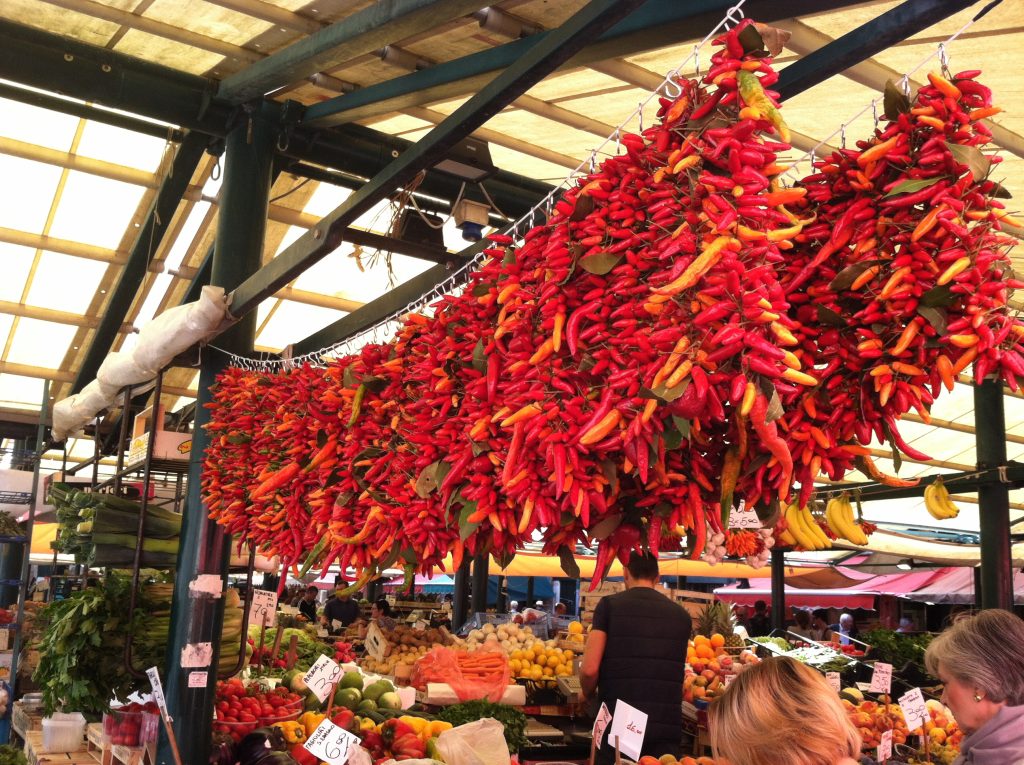
When you leave the museum, strike out toward Hassan II Mosque on foot, choosing the route that takes you through the fortified Bab Marrakech gate and into the winding streets of the Old Medina. Casablanca’s medina differs from the fabulous yet somewhat touristy medieval souks of Marrakesh and Fez in that it is mainly residential, and the shops that do exist, harbor bakers and butchers, metalworkers, and carpenters rather than souvenir sellers. Nevertheless, the rambling, whitewashed buildings date back to the 1800s, and strolling amongst them is one of the best ways to get an authentic insight into the essence of Casablanca itself.
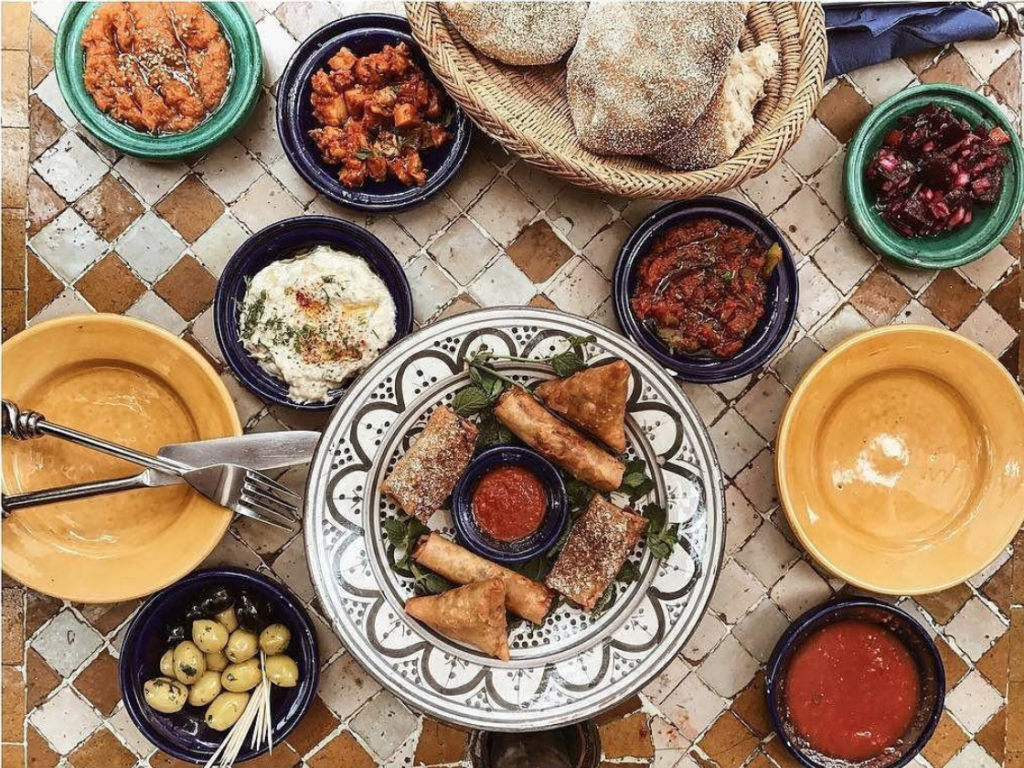
Eventually, your steps will lead you to La Scala, the fortified bastion that separates the Old Medina from the port. The Portuguese built its crenelated ramparts in the 16th century to defend their settlement from attack, and today, vintage cannons still point seaward in an attempt to ward off the pirates that once plagued these shores. Tucked into the walls of the old fortress is a restaurant, also called La Sqala, where you can stop for lunch. Sit at a table amidst the exotic foliage of the Andalusian garden courtyard and savor the sumptuous flavors of a traditional Moroccan tagine or pastilla. Iced fruit juices restore your energy before continuing your journey towards the mosque.
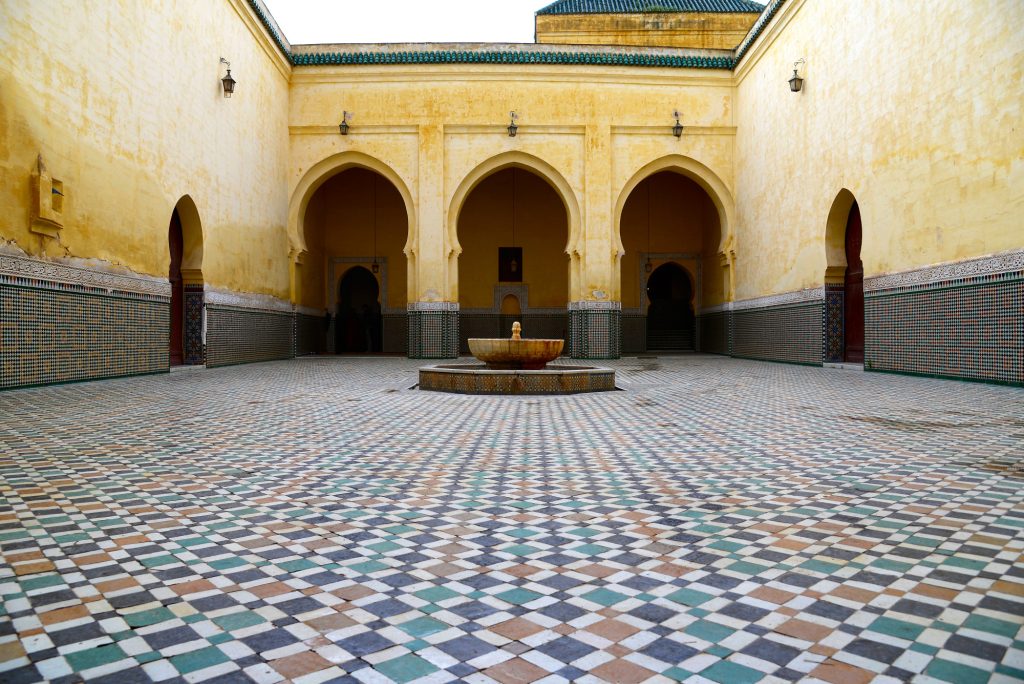
By 4 p.m., you should have arrived at Hassan II Mosque. You won’t miss it: commissioned by King Hassan II and completed in 1993, it is the largest functioning mosque in Africa, and its minaret stands some 60 stories high. It is one of only a handful of Moroccan mosques that allow non-Muslims to enter on guided tours that last approximately an hour. You will visit the prayer hall and the ablution rooms, the Koranic school, the library, and the museum while wondering at the exquisite work of 10,000 master artisans from all over Morocco. Stucco moldings, zellij tile work, cedar carpentry—the mosque is a treasure trove of craftsmanship big enough to hold some 105,000 worshippers. Remember to dress respectfully and remove your shoes before entering. After the tour, stay and watch the sun sink into the sea. The mosque’s westward-facing aspect and breathtaking location at the end of an ocean promontory make it one of the best sunset spots in the country.
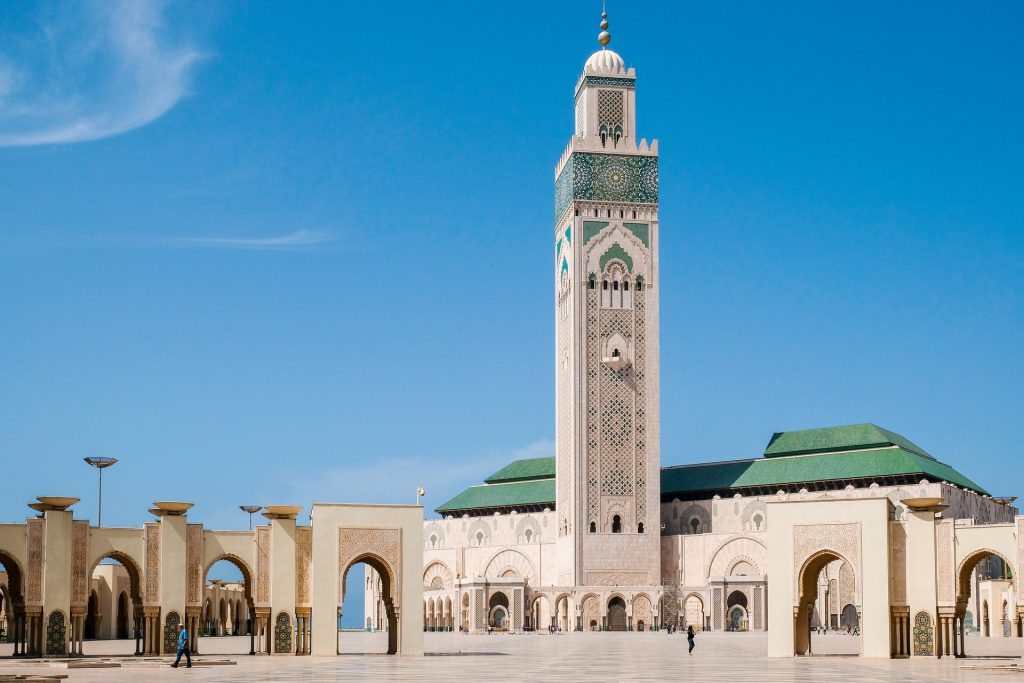
If half the reason you’re in Casablanca is because you loved the movie of the same name starring Ingrid Bergman and Humphrey Bogart, you’ve got to go to Rick’s Café for dinner. Nestled against the walls of the Old Medina, it’s a detailed recreation of the gin joint from the movie. And while the celluloid Rick’s Cafe is fictional, it comes to life here with a fanfare of potted ferns, geometric black-and-white marble floors, and Art Deco antiques (including a vintage roulette table and an authentic 1930s Pleyel piano). Come for Champagne cocktails and to listen to live jazz; then stay for sophisticated European and Moroccan cuisine. The restaurant closes at 1 a.m., so if you want to, you can stay late to watch “Casablanca” being screened on repeat in a cozy side lounge.
Day 2
On your second morning, forgo the hotel breakfast in favor of one of Casablanca’s best-loved international cafés, Bondi Coffee Kitchen. This Australian-owned initiative is a 15-minute walk away and exudes contemporary chic, with trendy menu items that range from ricotta hotcakes and chia pudding to smashed avocado on toast. To wash it all down, choose imported Arabica coffees, raw-pressed juice, or perhaps a plant-based latte. After breakfast, hop in a petit taxi for a ride to the Quartier Habous.
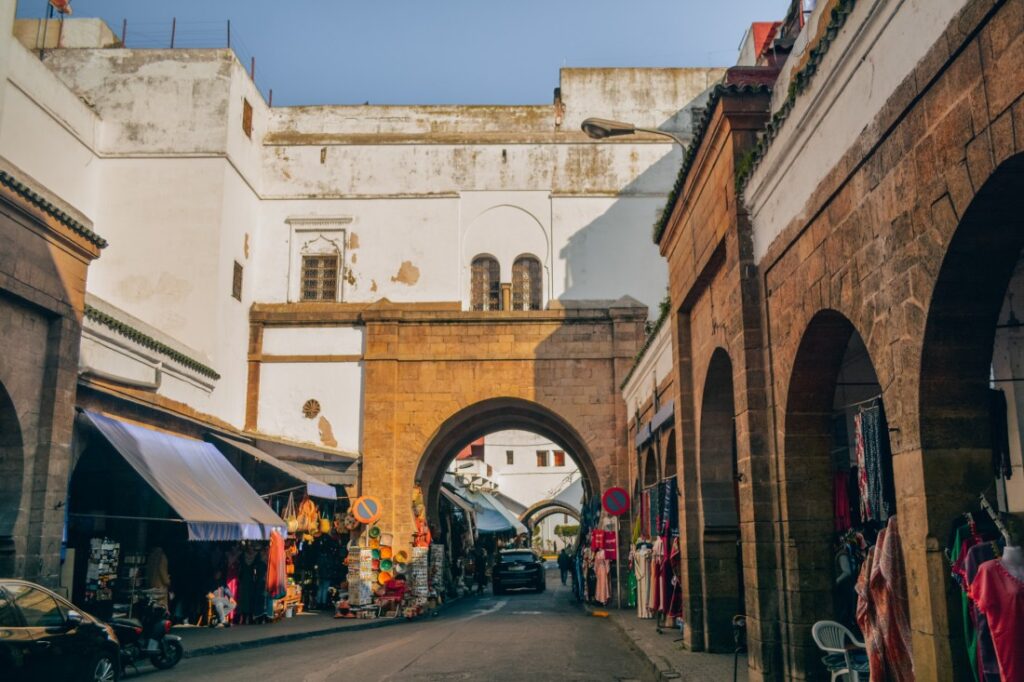
Built by the French in the 1930s, this neighborhood showcases Mauresque architecture with fanciful arches, arcades, and monumental gateways. It also doubles as a modern souk, with shops selling everything from Aladdin-style lamps to jeweled slippers and exotic spices. It is the perfect place to shop for souvenirs; remember to haggle for the best price whenever you like something. Feeling peckish or want to pick up a treat for later? Stop in at Patisserie Bennis, a family-owned institution that dates back to 1930, for hand-crafted Moroccan pastries. Having filled up on pastries, iit’stime for some exercise. Take a petit taxi to Ain Diab for a stroll along the oceanfront boardwalk known as La Corniche. In summer, the vibe here is particularly festive, with foreigners and locals gathering to picnic and paddle at the beaches, admire the sea view, or to people-watch. If yyou’refeeling particularly adventurous, pack your swimsuit for a dip in the ocean or consider renting a board from Anfa Surf School.
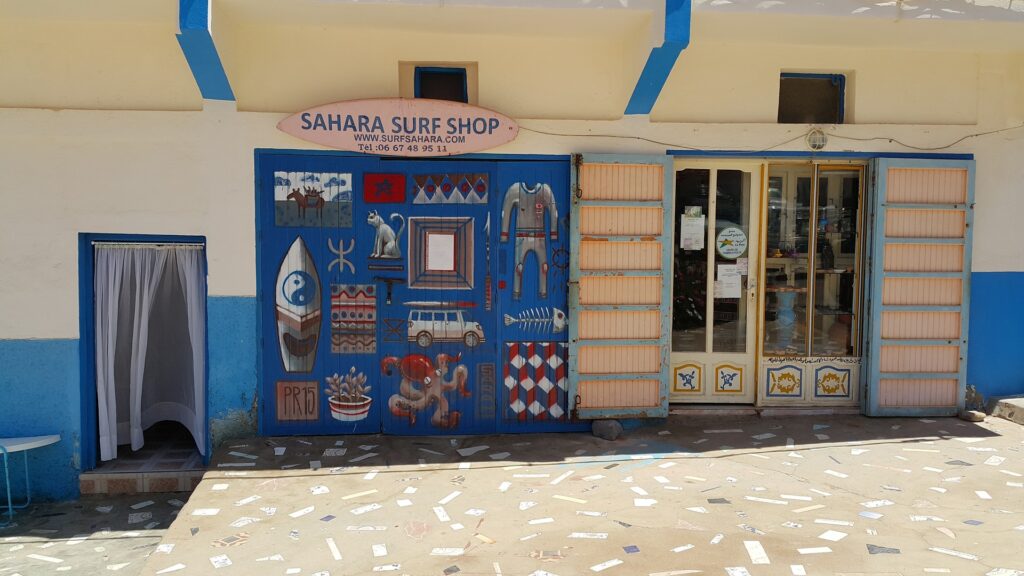
One of the best places to take in the atmosphere of La Corniche is Le Cabestan, a beautiful European restaurant with an outdoor lounge bar. Wide-angle ocean vistas provide the perfect setting for afternoon drinks or a light lunch (think Andalusian gazpacho or a spicy shrimp casserole). Head to the hotel for a shower, then down to the basement spa for a traditional hammam experience, followed by a Moroccan massage. The latter uses local argan oil and is guaranteed to soothe any aching muscles caused by your day of on-foot exploration, giving you a second wind for the evening ahead.

Your last evening in the White City deserves a celebratory meal at a top-ranked Casablanca restaurant. Located a 15-minute walk from the hotel, NKOA borrows influences from worldwide and blends them to create unique fusion cuisine, decor, and music. Try a black-bread burger with fig sauce or sesame-encrusted tuna steaks and a glass of bright pink hibiscus tea. By the time you finish eating, the night is still young. Wander five minutes down the street to Kenzi Tower Hotel, where the elevator waits to whisk you up to the top floor. Stunning views from atop a building that claims to be the tallest in North Africa welcome you to Sky28 bar, where you can sip cocktails and listen to live music until 1 a.m. the following day.




